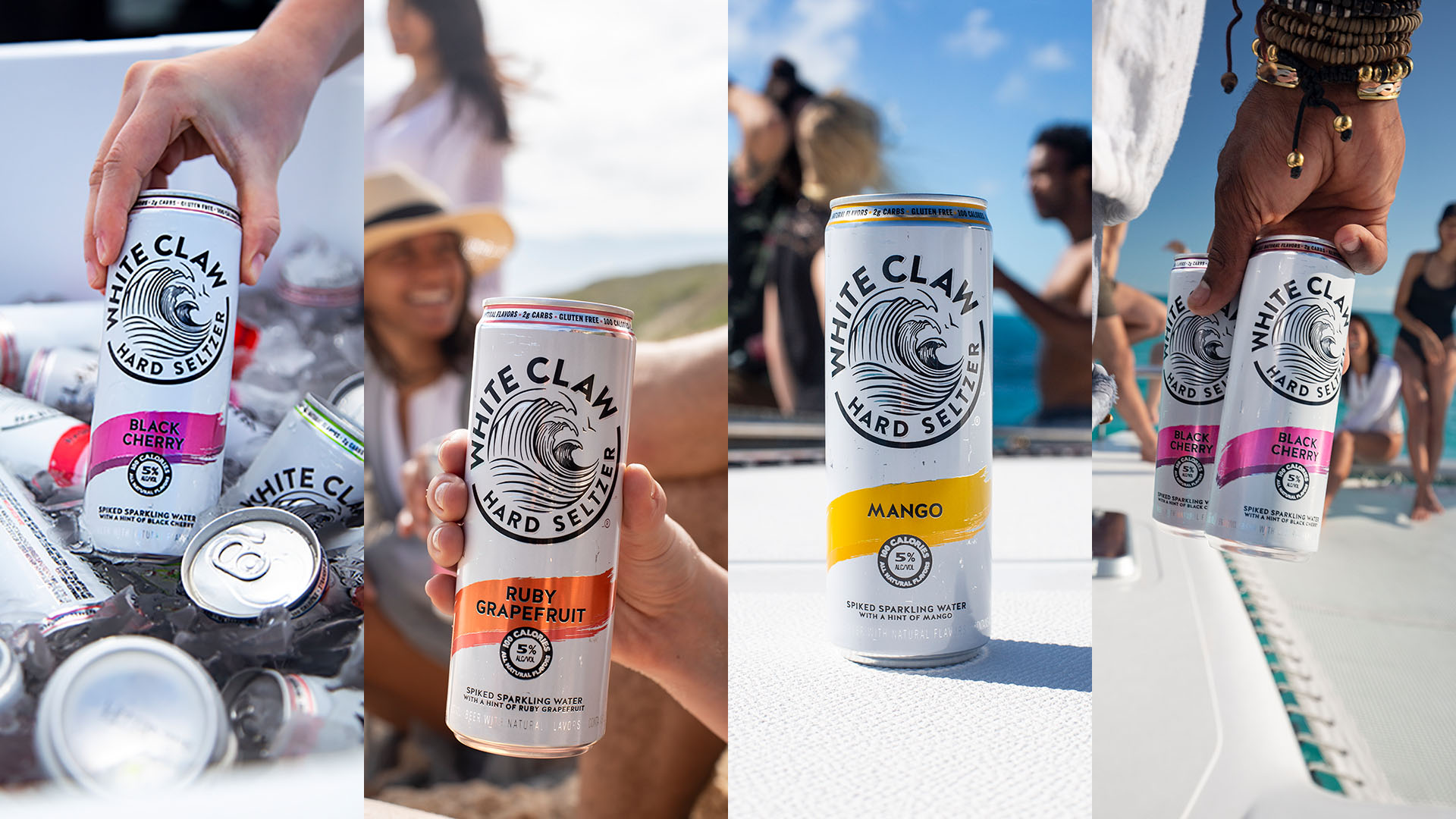Why Are People Obsessed With White Claw?
Since my taste test of hard seltzers, people have begun turning to me as their personal Hard Seltzer Explainer. I field the questions at parties, via text, on Twitter: What are hard seltzers made of? Who's drinking them? But above all: Why are people so obsessed with White Claw?
Let's first acknowledge that White Claw is the dominant brand in this increasingly crowded hard seltzer field. It was an early brand on the national scene, and it accounts for more than half of all hard seltzer sales total. Its volume sales are up 275% since last year. And take this past Fourth of July weekend, which is the second-most if not the most important beer sales weekend of the year: White Claw was the top growth brand among the entire beer and flavored malt beverage category, as tracked by Nielsen. At this point, White Claw has become synonymous with the entire category—like Band-Aid stands in for adhesive bandages—and is certifiably its own pop-culture phenomenon.
People are using the phrase "White Claw lifestyle" without much irony. It's the cultural touchstone of summer 2019, with its own YouTube tributes, unlicensed merch, memes, phrases ("Claw is the law") and parodies. The Wrap was stunned by its popularity at Coachella, calling it "Gen-Z's version of Zima." Yet the derision toward White Claw, at least from beverage media, is nearly as strong as its popularity. Reading about its rise, I can practically hear the sneers with which writers typed out their pieces. The hosts of this VinePair podcast, ostensibly exploring the popularity of White Claw, drag the show's 28-year-old engineer onto the mic to explain why he drinks the stuff. Says one host: "Nick admitted at the beginning of the show, before we started recording, that he actually likes White Claw!"
But if you don't drink White Claw or don't know people who do—increasingly difficult, as I cannot stress enough that this brand is everywhere—then maybe it seems a bit baffling. It's flavored water that gets you drunk...what's the massive appeal? Allow me, a millennial from the state that consumes the most White Claw per capita, to elucidate its appeal. Turns out, it's pretty simple.

“Made pure”
Boasting 100 calories and 2 grams of carbs per 12-ounce can, White Claw fits with overall trends—especially among young consumers—toward food and beverages perceived as more wholesome. The brand's tagline—"Made pure"—could easily be advertising a vegan chia bowl. Few consumers understand where the gluten-free alcohol in White Claw comes from (fermented sugars, more on that here), so it's easy to assume it's some sort of "clean" alcohol source that's less filling or bloating than beer or sweet cocktails.
Anecdotally, there's a strong perception among White Claw fans that the stuff is less taxing on their bodies—it's not-so-jokingly called hydrating—than beer or other alcohol would be. Of course, to your body, booze is booze: Drink too much, and you'll hurt the next day. But it's popular out here in Montana on hikes, boat trips, etc. Tubing down a river with friends last weekend, I saw more White Claws than beer or water.
Easy flavors
The complaint I hear most about White Claw—"It just tastes like watery fruit"—is exactly its appeal. There's nothing complex, nuanced, challenging, or special about it, and that's what makes it approachable. A brewery cofounder I know told me he thinks younger drinkers like hard seltzers because they don't want to go through the "work" of learning to enjoy something like beer or wine. Other generations were told alcohol was a learned taste that we had to grow to appreciate, but why bother when there's a low-calorie product out there that gives you a low buzz and tastes like fizzy juice-water? Young consumers, especially during the easy-breezy summer, reject the idea that alcohol should be complicated or fussy.
Convenience value
Another White Claw criticism I hear? "Don't these people know how to make vodka sodas?" Yes, but customers can't buy a six-pack of premade, mango-flavored vodka sodas at 7-Eleven on their way to the beach. This critique assumes the occasions for drinking White Claw are the same occasions when you'd mix a cocktail from your bar cart, when in my experience, they're not.
Price point
White Claw retails at roughly $8.99 per six-pack or $15.99 per 12-pack. That's cheaper than a lot of craft beer and well below what premixed canned cocktails cost. The 19-oz. tallboys—sold singly for $3 or less—also have the market nearly cornered when it comes to consumers looking for a single-serve, gluten-free option.
The Claw lifestyle
All brands want to be lifestyle brands, and consumers expect brands to do more for them than just deliver a product. The devotion White Claw drinkers have to those cans has less to do with the (as we've mentioned, relatively unremarkable) liquid inside, and more to do with what White Claw symbolizes. Young drinkers, especially on social media, have cemented White Claw's association with summer, parties, the outdoors, music festivals, and easy-going day drinking. White Claw isn't difficult to understand at all, and that's exactly why people love it.
